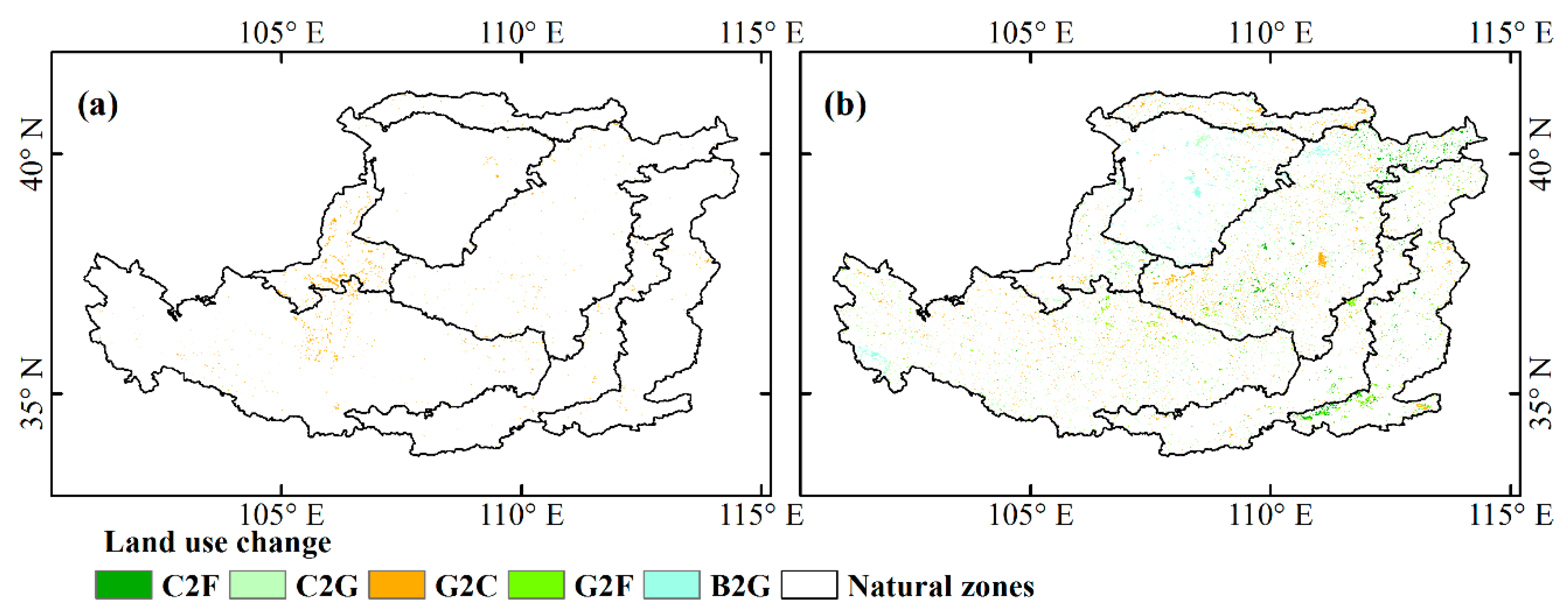Correction: Z. Liu and Y. Liu. Does Anthropogenic Land Use Change Play a Role in Changes of Precipitation Frequency and Intensity over the Loess Plateau of China? Remote Sens. 2018, 10, 1818
Partial Corrections of Section 3.1

References
- Liu, Z.; Liu, Y. Does Anthropogenic Land Use Change Play a Role in Changes of Precipitation Frequency and Intensity over the Loess Plateau of China? Remote Sens. 2018, 10, 1818. [Google Scholar] [CrossRef]
© 2019 by the authors. Licensee MDPI, Basel, Switzerland. This article is an open access article distributed under the terms and conditions of the Creative Commons Attribution (CC BY) license (http://creativecommons.org/licenses/by/4.0/).
Share and Cite
Liu, Z.; Liu, Y. Correction: Z. Liu and Y. Liu. Does Anthropogenic Land Use Change Play a Role in Changes of Precipitation Frequency and Intensity over the Loess Plateau of China? Remote Sens. 2018, 10, 1818. Remote Sens. 2019, 11, 1603. https://doi.org/10.3390/rs11131603
Liu Z, Liu Y. Correction: Z. Liu and Y. Liu. Does Anthropogenic Land Use Change Play a Role in Changes of Precipitation Frequency and Intensity over the Loess Plateau of China? Remote Sens. 2018, 10, 1818. Remote Sensing. 2019; 11(13):1603. https://doi.org/10.3390/rs11131603
Chicago/Turabian StyleLiu, Zhengjia, and Yansui Liu. 2019. "Correction: Z. Liu and Y. Liu. Does Anthropogenic Land Use Change Play a Role in Changes of Precipitation Frequency and Intensity over the Loess Plateau of China? Remote Sens. 2018, 10, 1818" Remote Sensing 11, no. 13: 1603. https://doi.org/10.3390/rs11131603
APA StyleLiu, Z., & Liu, Y. (2019). Correction: Z. Liu and Y. Liu. Does Anthropogenic Land Use Change Play a Role in Changes of Precipitation Frequency and Intensity over the Loess Plateau of China? Remote Sens. 2018, 10, 1818. Remote Sensing, 11(13), 1603. https://doi.org/10.3390/rs11131603



